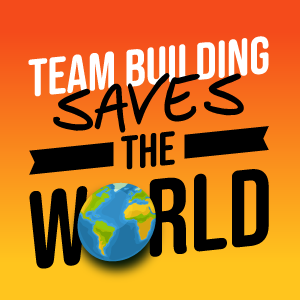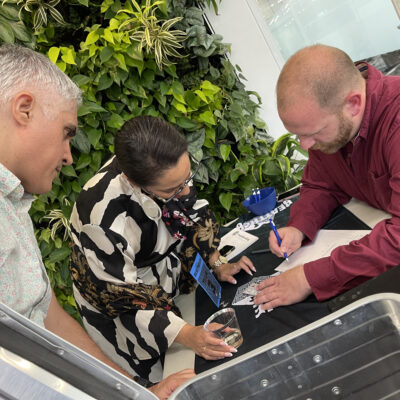Developing strong and cohesive teams is essential for every business or organization, but team development doesn’t happen overnight. There are numerous stages of team development that can ultimately lead to a synergistic team, which carries with it many benefits.
Helping your team develop can help improve the workplace culture, increase productivity, efficiency, innovation, improve teamwork, and much more. If you want to create teams that can work together to achieve your goals, you’ll need to place a focus on developing your teams.
At TeamBonding, we have years of experience working to bring teams together and help them grow into the best teams to be. Which is why for today’s blog, we’re going to use our knowledge to cover the 5 stages of team development, as well as the importance of team development.
Why Team Development Matters
Before getting too deep into the stages of team development, it’s important to talk about why team development matters.
Put simply, team development is the process of teams coming together, organizing, and growing into teams that can work with each other to achieve common goals. But why does it matter?
Team development plays an important role in the workplace in numerous ways. Teams that have developed into cohesive groups perform better in nearly all aspects—including efficiency, innovation, retention, satisfaction, and more. If you want your team(s) performing at the best of their abilities, you want to make sure they are properly developed.
On top of that, team development can also play a big role in the overall culture of the workplace. People work better when they enjoy their work culture, and people enjoy work more when they have teams they like working with. It’s very simple, but it can be surprising how big of an impact happy employees can have on your organization.
It’s also worth noting that team development isn’t a once and done sort of thing. Just how professional development is something that should be on going, so should team development. Teams can stagnate, and your developments can end up regressing if you don’t stay on top of things. Team development should be continuous, and it can keep your teams growing and moving forward.
5 Stages of Team Development
With the importance of team development out of the way, let’s answer the big question of today’s blog—what are the stages of team development?
Stage 1: Forming
The first stage of team development is forming, which should come as no surprise. Before your team can come together as a cohesive unit, they have to form. This is arguably one of the most important stages of developing a team.
In this stage, your team is just coming together. They are getting to know each other, learning more about each other’s habits and preferences, building relationships, clarifying roles, and setting expectations.
As you’d expect, this stage is incredibly important because this is the foundation that all the other stages build upon. If your team doesn’t get started off on the right foot, it can make things much more difficult down the line.
A common challenge teams face in this stage is simply communicating with each other, opening up, and settling into their roles. Though it sounds basic, lots of people struggle with this part of team development. Thankfully, that’s a relatively simple hurdle to overcome.
Team building exercises can be a great way to ensure your teams are forming well. An event like iBuild is a great way to bring your team together from the very start and ensure those important relationships get formed. They’ll also get to learn more about each other via hands-on experience, which also helps your team form more strongly.
Stage 2: Storming
The next stage of team development is storming. In this stage, teams really start to get into the nitty gritty of working together. That means potential conflicts, clarification of roles, learning more about each other, articulating needs, and more. In more casual language, you can think of this as the “growing pains” stage.
Conflicts are inevitable in teams. People don’t always agree, and personalities clash. A key determining factor of how well your team progresses though is how they handle those conflicts. A good team will learn how to effectively manage those conflicts and move forward into the next stage. If your team can handle conflicts like personality differences, disagreeances, and differing strategies, you’re on the path towards success.
Unsurprisingly, this is a stage where challenges commonly arise. Many teams struggle to effectively deal with conflicts, and those conflicts can fester and cause problems later on. There are a couple of strategies you can consider to deal with this.
One of the best ways to deal with these issues is simply by bringing your team together for a group discussion and emphasizing clear communication. Having the team talk through their issues calmly and respectfully is often enough to address them.
You could also consider trainings or seminars that emphasize conflict resolution. Learning to deal with conflicts can help everyone on the team deal with and move on from their disagreements.
Stage 3: Norming
Next comes the norming stage, and this is when the team really starts to work together as a group. They’re building team spirit, working together more efficiently, know each other’s strengths and weaknesses, and are growing together as a team.
This stage can really showcase how well things are going so far. If your team is doing good and working together well, then you’re probably on the right track. If your team is struggling to work cohesively and are having arguments, then things likely went wrong during the forming and storming stages.
For teams that are working cohesively, there are still things you need to be conscious of. Things might be going great now, but you need to stay focused. Navigating leadership for example is key at this stage, and a good leader will help ensure things keep moving forward.
If your team is struggling in this stage, consider going back to the advice offered in the storming stage. Your team likely never transitioned through that stage and is still dealing with those problem, so back and focus on conflict resolution, understanding differences, working together, etc.
Team bonding events are also a good idea at this stage, regardless of how well things are going. An event like Integrity can help your team improve their collaboration, communication, and teamwork—all of which work towards your goal of team development.
Stage 4: Performing
Stage 4 is the performing stage, and this is when your team really hits their stride. They are working together at peak efficiency and performance, they quickly deal with conflicts, everyone is settled into their role, and the team is growing together.
The two main things you should be thinking about in this stage are maintaining it and continuing your team’s growth. You don’t want to stagnate and fall back, and you still want your team to develop and grow—individually and as a team.
When it comes to sustaining performance and continual growth, team building is a great option. With team building programs, you can help your team grow while addressing key areas in need of improvement like leadership, teamwork, communication, and more.
For example, our Discover Your Strengths program can help your teams better understand their strengths, as well as the strengths of their fellow team members. And an event like Tabletop FASTCAR can bring your team together, encourage comradery, and rejuvenate spirits.
Stage 5: Adjourning
The final stage of team development is adjourning. As the name implies, this is the stage where your work as a team comes to a close. Your team may disband, or the team may be repurposed for another project. But this is the point where the original project is over and it’s time to part ways, even if only temporarily.
Though this is the end of your team, it doesn’t mean it’s actually the end. There are multiple important things that should occur during this stage.
One of the key aspects of this stage is reflection. You and your team should come together and reflect on the experience. Think about your challenges, struggles, victories, what you learned, and how the experience may shape things going forward.
The other critical part of this stage is to celebrate your team. You all worked hard to achieve your goals, and you deserve some recognition. Take the time to celebrate your achievements and be proud of your work before you all move on.
Team Development with TeamBonding
Team development might seem like a quick simple thing, but it’s a multi-stage process that should be ongoing. Through the five stages of team development—forming, storming, norming, performing, and adjourning—you can create strong and cohesive teams. And with continuous development, you can keep those teams performing at their best.
At TeamBonding we have over 25+ years of experience putting on corporate events. We have helped numerous organizations create a healthy and positive work culture that encourages team development. Our experience driving employee engagement and satisfaction makes us a perfect fit for helping your teams grow.
If you’re ready to take action to transform your teams into the best they can be, have a look at our events and get in touch with TeamBonding today.














